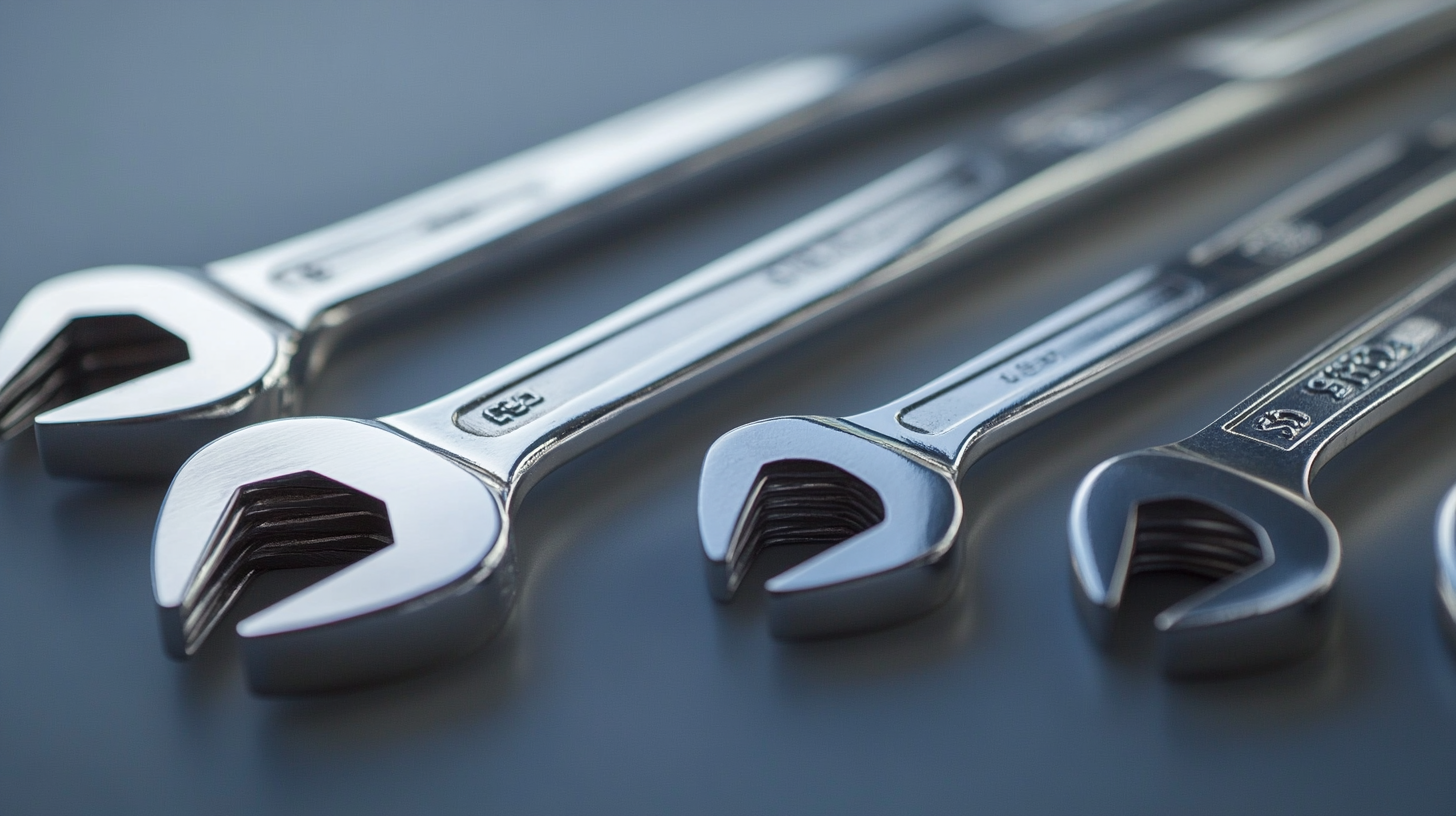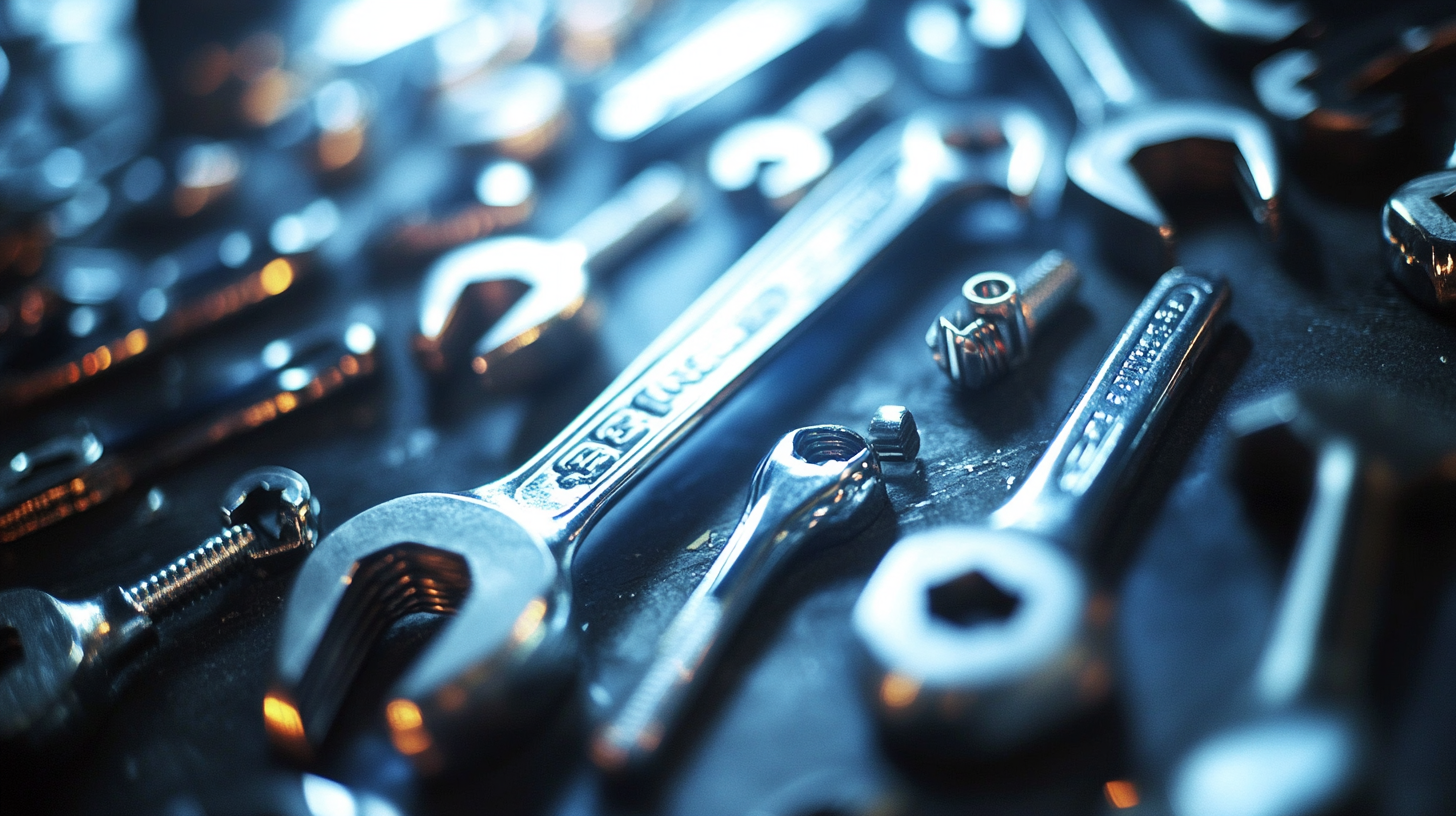
Future Innovations in Best Wrench Tool Set Technology Trends for 2025
In 2025, the evolution of wrench tool set technology is poised to reshape not only the manufacturing landscape but also how professionals approach repairs and maintenance tasks globally. As the demand for precision and durability in tools continues to rise, the global hand tools market, which was valued at approximately $23.4 billion in 2020, is projected to surpass $30 billion by 2025, driven largely by advancements in materials and manufacturing processes. Innovations such as smart wrench tool sets that integrate digital torque measurement and connected app functionalities are set to become standard in professional settings. With "World-Class Manufacturing, China's Pride, Exporting Globally" as a guiding principle, Chinese manufacturers are leading the charge, investing heavily in R&D to enhance the functionality and efficiency of wrench tool sets, thus solidifying their position in the international market. As we explore these future innovations, it is clear that the wrench tool set will be at the forefront of technological advancements in the tool industry.

Future of Wrench Tool Sets: An Overview of Emerging Technologies in 2025
As we look ahead to 2025, the wrench tool set industry is poised for transformative innovations driven by emerging technologies. Recent reports indicate that the global hand tools market is expected to reach $13.3 billion by 2025, with a significant portion attributed to advancements in wrench tool design. One of the key trends is the integration of smart technologies, including Bluetooth connectivity, which allows users to monitor torque settings and receive real-time feedback via mobile applications. This feature not only enhances precision but also improves safety during usage.

Moreover, the rise of sustainable materials is reshaping the production of wrench sets, with manufacturers increasingly opting for eco-friendly alloys and ergonomically designed handles that reduce strain during prolonged use. According to a study by MarketsandMarkets, approximately 25% of users prioritize sustainability in their purchasing decisions. This shift towards environmentally conscious tools not only reflects consumer sentiment but also encourages manufacturers to innovate continuously in material science, maintaining high-performance standards while minimizing environmental impact. Consequently, the future of wrench tool sets in 2025 is bright, marked by smarter, more sustainable solutions that cater to both professional tradespeople and DIY enthusiasts alike.
Addressing Industry Standards: Current Problems with Wrench Tool Set Manufacturing
As we look towards 2025, the wrench tool set industry faces significant challenges concerning manufacturing standards and operational efficiency. Recent reports indicate that addressing current problems in wrench tool set production is crucial for aligning with evolving industry norms. The Ministry of Industry and Information Technology emphasizes a shift away from merely scaling production capacity, urging companies to focus on quality improvements and adherence to established standards to drive sustainable growth.
In line with this, the newly released "National Intelligent Manufacturing Standard System Construction Guide (2024 Edition)" aims to introduce over 100 revised standards by 2026, illustrating a commitment to enhancing the quality of manufacturing processes across various sectors, including tools. Notably, these standards will play a pivotal role in ensuring that companies not only meet current manufacturing benchmarks but also remain competitive in a rapidly evolving market. As such, wrench tool set manufacturers must adapt to these standards to improve product quality, reduce waste, and ultimately enhance market competitiveness.
The integration of advanced technologies and adherence to standardized practices is not just a regulatory requirement; it represents an opportunity for innovation. By focusing on industry benchmarks and investing in R&D, companies can revolutionize their manufacturing processes, producing high-performance wrench tool sets that meet the increasingly stringent demands of both consumers and regulatory bodies. This emphasis on quality over quantity is key to fostering a more robust and resilient manufacturing landscape.
Innovative Materials and Design: Enhancing Durability and Functionality in Wrenches
The future of wrench tool set technology is poised for significant evolution, with innovative materials and design enhancements leading the charge. As we look towards 2025, manufacturers are increasingly turning to advanced materials like carbon fiber and high-strength alloys, which offer superior durability without compromising on weight. These materials not only withstand the rigorous demands of professional mechanics but also cater to DIY enthusiasts who seek reliability in their tool sets.
Additionally, the design of wrenches is becoming more ergonomic and user-friendly. Innovations such as ratcheting mechanisms and multi-functional designs maximize efficiency and ease of use. The integration of smart technology into wrench sets is on the horizon, where sensors could provide real-time feedback on torque levels, ensuring accuracy and preventing damage to fasteners. These advancements highlight a trend towards enhancing functionality while maintaining the essential durability that users demand. The fusion of innovative materials and smart design in wrench tool sets promises to redefine the traditional tools of the trade, setting a new standard for performance and usability.
Future Innovations in Best Wrench Tool Set Technology Trends for 2025
Smart Tool Integration: The Role of IoT in Modern Wrench Tool Sets
The future of wrench tool sets is being significantly influenced by smart tool integration, predominantly through the Internet of Things (IoT). By 2025, we can expect wrench tools equipped with sensors that monitor usage patterns and provide real-time feedback to users. This will not only enhance productivity but also lead to intelligent maintenance schedules, preventing tool failure and ensuring long-term durability. With a booming power tools market projected to expand alongside India’s infrastructure growth, the demand for such innovative solutions is likely to rise sharply.
One insightful trend is the application of AI-powered features in modern wrench tools, enhancing smart leak detection and predictive maintenance. This technology allows users to receive notifications about potential issues before they become significant problems, further refining their approach to tool management. Reports indicate that the Indian power tool market is expected to grow substantially by 2035 due to the rise in industrial projects, positioning IoT-integrated tools as essential assets in the evolving construction landscape.
Tips for users include regularly checking for software updates on their IoT-powered tools to ensure optimal performance and utilizing analytics from tool usage to make informed purchasing decisions for future projects. Additionally, embracing tools with predictive maintenance capabilities can drastically reduce downtimes, translating to increased efficiency on job sites.
Future Innovations in Best Wrench Tool Set Technology Trends for 2025
| Feature | Description | Expected Impact | Implementation Year |
|---|---|---|---|
| Smart Connectivity | Integration with mobile apps for real-time data tracking and metrics. | Enhanced user experience and tool efficiency. | 2025 |
| AI Assistance | Use of AI to suggest the right tool and setting for specific tasks. | Reduced time for task completion and increased effectiveness. | 2025 |
| Self-Adjusting Mechanisms | Tools that automatically adjust to fit various sizes and types of fasteners. | Increased versatility and reduced likelihood of tool damage. | 2025 |
| Data Analytics | Tools equipped with sensors collecting usage data for performance analysis. | Informed decisions on maintenance and optimal usage. | 2025 |
| Remote Monitoring | Ability to monitor tool status and usage remotely through IoT connections. | Improved inventory management and reduced downtime. | 2025 |
Sustainability Trends: Eco-Friendly Practices in Wrench Tool Manufacturing for the Future
As we look toward 2025, the wrench tool manufacturing industry is increasingly focusing on sustainability. Eco-friendly practices are becoming integral not only to production processes but also to the selection of materials. Manufacturers are now prioritizing recyclable and renewable materials, aiming to reduce waste and lower their carbon footprint. By integrating sustainable practices, companies are not only appealing to environmentally conscious consumers but also ensuring compliance with evolving regulations.

Tips for environmentally friendly wrench tool use include opting for tools that have been produced using sustainable methods and materials. Look for those that are designed for longevity, as durability reduces the need for frequent replacements. Additionally, proper maintenance and usage of tools extend their lifespan, minimizing ecological impact.
Another trend is the incorporation of energy-efficient manufacturing processes. Innovations such as solar-powered factories and waste-recycling initiatives are becoming more common. This not only helps in conserving energy but also in fostering a circular economy within the industry. As consumers, it’s beneficial to support brands that commit to these sustainable practices, contributing to a greener future for tool manufacturing.
